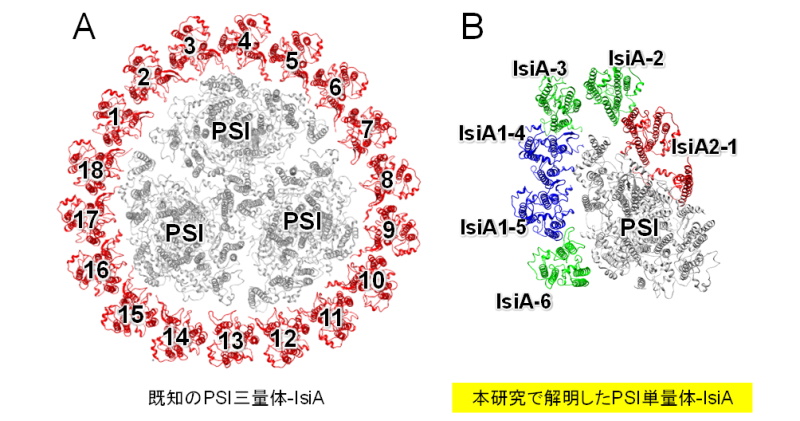2023-02-21 スイス連邦工科大学ローザンヌ校(EPFL)
◆腎臓病は、世界の人々の20%以上が急性腎不全に、10%が慢性腎不全に罹患しており、世界的に大きな健康問題となっている。腎臓病は予防可能な疾患であるにもかかわらず、罹患率と死亡率の直接的な原因であると同時に、心血管疾患の重大な危険因子でもある。
◆Auwerx教授のグループは、ヤンセンファーマの研究者とともに、7種類の腎臓障害モデルマウスの反応を確立し、急性腎障害に対する感受性と慢性腎臓病への移行を比較する研究を実施した。その目的は、腎障害に対するマウス系統の反応の基準値を確立することであった。
◆その結果、あるマウス系統は急性腎障害から慢性腎臓病への移行に完全に耐性があり、一方、ある系統(いわゆる「PWK/PhJ系統」)は非常に感受性が高いという「系統特異的な反応」があることが明らかになった。
◆この系統は、実験室で飼育されたマウスとは異なり、野生のマウスから採取されたものである。PWK/PhJ株は、実験室で飼育されたマウスとは遺伝的に異なるため、腎臓病の遺伝的要因を解明するための貴重なツールである。
◆今回の研究で、PWK/PhJマウスの感受性は、通常よりも低いミトコンドリア機能、持続的な炎症、顕著な線維化に関連しており、これらはすべて急性腎不全から慢性腎不全への移行を加速することが明らかになった。
◆この研究結果をヒトの腎臓病と比較することにより、研究者らは、種を超えて共通する重要な代謝的変化を発見した。具体的には、回復初期にNAD+代謝を含む免疫経路とミトコンドリア経路を調節することが、長期的な寛解を予測することができた。
◆2番目の研究では、AuwerxのグループとJanssenの同僚が、最も一般的な慢性肝疾患である非アルコール性脂肪性肝疾患(NAFLD)に焦点を当てた。NAFLDは、欧米では約25%の人が罹患しているといわれています。NAFLDは、良性疾患から重症の非アルコール性脂肪性肝炎(NASH)まで、様々な肝臓疾患の総称であり、脂肪肝、炎症、さらには肝線維化を特徴とする進行性の肝疾患である。
◆本研究の筆頭著者であるGiorgia Benegiamoは、「ヒトのNASHをマウスでモデル化するための多大な努力にもかかわらず、優れたマウスモデルはまだ存在していません」と述べている。”ここでは、7つの異なる遺伝子背景を持つマウスで、人間の生活習慣を可能な限り模倣した食事と環境条件下で、NASHに対する感受性を探りました。”
◆その結果、同じ環境にさらされたにもかかわらず、マウス系統によって反応が大きく異なることがわかった。PWK/PhJ系統のマウスは、NAFLD/NASHに対して最も感受性が高く、また、線維性NASHへの進展が見られる唯一の系統であることが再び証明された。
◆Benegiamoは、「全く同じ代謝的課題にさらされたマウスで、これほど幅広い表現型の反応が見られることに驚きました」と語る。「この研究の最も重要な成果は、ヒトの疾患に酷似した新しいNASHのモデルマウスを同定したことであり、新しい治療戦略の開発と検証に極めて有用なものです」。
◆PWK/PhJ株は、メタボリックシンドロームの症状を示し、肝脂肪症、炎症、線維化を発症する、新規NASHマウスモデルです。そのため、ヒトのNASHのいくつかの側面をうまくモデル化しています。分子レベルでは、PWK/PhJマウスは重度のミトコンドリア機能不全を発症している。
◆「どちらの研究でも、ミトコンドリア機能異常が病気の進行の根底にあることがわかり、非常に感受性の高いマウスと非常に抵抗性の高いマウスが同定されました」とJohan Auwerxは言う。「より良いモデルがあれば、アンメットメディカルニーズの高いこれらの疾患に対する薬剤開発を加速させることができます。
<関連情報>
- https://actu.epfl.ch/news/modeling-liver-and-kidney-disease/
- https://rupress.org/jem/article/220/4/e20221738/213867/The-genetic-background-shapes-the-susceptibility
- https://insight.jci.org/articles/view/164626
ミトコンドリア機能障害とNASHの進行のしやすさを形成する遺伝的背景 The genetic background shapes the susceptibility to mitochondrial dysfunction and NASH progression
Giorgia Benegiamo,Giacomo V.G. von Alvensleben,Sandra Rodríguez-López,Ludger J.E. Goeminne,Alexis M. Bachmann,Jean-David Morel,Ellen Broeckx,Jing Ying Ma,Vinicius Carreira,Sameh A. Youssef,Nabil Azhar,Dermot F. Reilly,Katharine D’Aquino,Shannon Mullican,Maroun Bou-Sleiman,Johan Auwerx
Journal of Experimental Medicine Published:February 14 2023
DOI:https://doi.org/10.1084/jem.20221738

Non-alcoholic steatohepatitis (NASH) is a global health concern without treatment. The challenge in finding effective therapies is due to the lack of good mouse models and the complexity of the disease, characterized by gene–environment interactions. We tested the susceptibility of seven mouse strains to develop NASH. The severity of the clinical phenotypes observed varied widely across strains. PWK/PhJ mice were the most prone to develop hepatic inflammation and the only strain to progress to NASH with extensive fibrosis, while CAST/EiJ mice were completely resistant. Levels of mitochondrial transcripts and proteins as well as mitochondrial function were robustly reduced specifically in the liver of PWK/PhJ mice, suggesting a central role of mitochondrial dysfunction in NASH progression. Importantly, the NASH gene expression profile of PWK/PhJ mice had the highest overlap with the human NASH signature. Our study exposes the limitations of using a single mouse genetic background in metabolic studies and describes a novel NASH mouse model with features of the human NASH.
ミトコンドリアとNAD+代謝が、多様なマウス集団における急性腎不全からの回復を予測する Mitochondrial and NAD+ metabolism predict recovery from acute kidney injury in a diverse mouse population
Jean-David Morel, Maroun Bou Sleiman, Terytty Yang Li, Giacomo von Alvensleben, Alexis M. Bachmann, Dina Hofer, Ellen Broeckx, Jing Ying Ma, Vinicius Carreira, Tao Chen, Nabil Azhar, Romer A. Gonzalez-Villalobos, Matthew Breyer, Dermot Reilly, Shannon Mullican and Johan Auwerx
Journal of Clinical Investigation Published February 8, 2023
DOI:https://doi.org/10.1172/jci.insight.164626

Abstract
Acute kidney failure and chronic kidney disease are global health issues steadily rising in incidence and prevalence. Animal models on a single genetic background have so far failed to recapitulate the clinical presentation of human nephropathies. Here, we used a simple model of folic acid–induced kidney injury in 7 highly diverse mouse strains. We measured plasma and urine parameters, as well as renal histopathology and mRNA expression data, at 1, 2, and 6 weeks after injury, covering the early recovery and long-term remission. We observed an extensive strain-specific response ranging from complete resistance of the CAST/EiJ to high sensitivity of the C57BL/6J, DBA/2J, and PWK/PhJ strains. In susceptible strains, the severe early kidney injury was accompanied by the induction of mitochondrial stress response (MSR) genes and the attenuation of NAD+ synthesis pathways. This is associated with delayed healing and a prolonged inflammatory and adaptive immune response 6 weeks after insult, heralding a transition to chronic kidney disease. Through a thorough comparison of the transcriptomic response in mouse and human disease, we show that critical metabolic gene alterations were shared across species, and we highlight the PWK/PhJ strain as an emergent model of transition from acute kidney injury to chronic disease.


